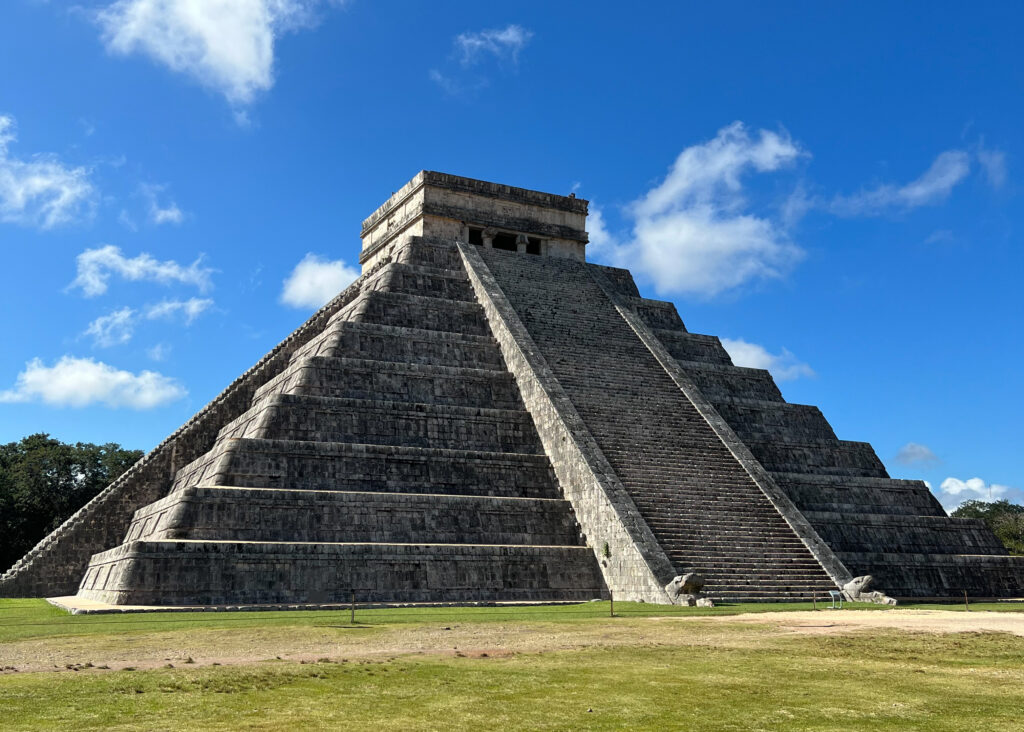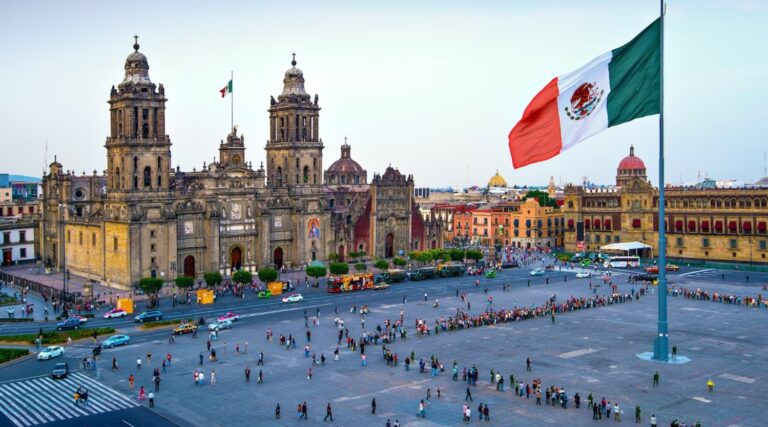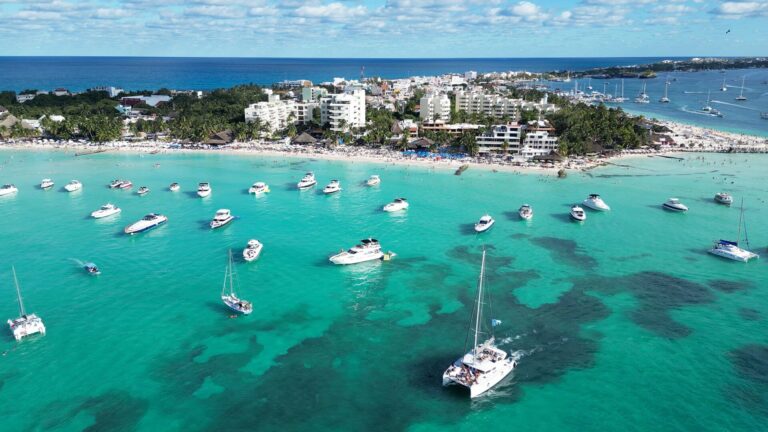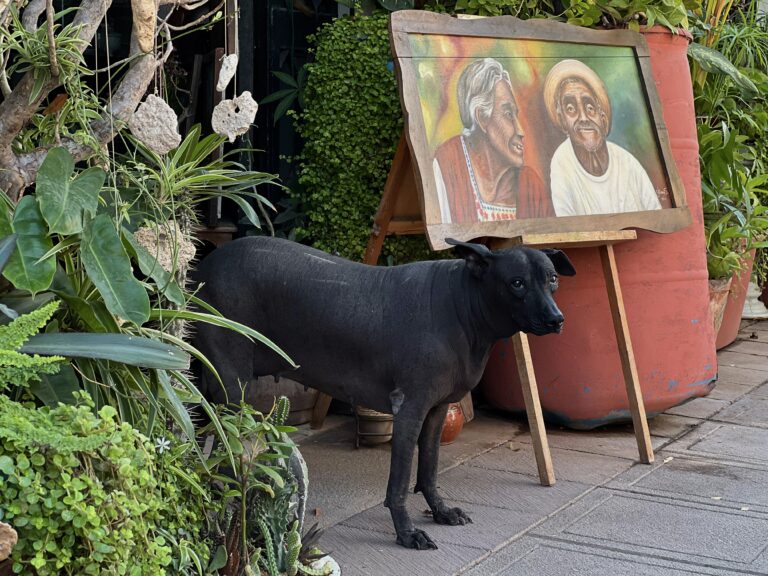If all the planets aligned, and it just happens that you are a history buff visiting Cancun or Riviera Maya, then you are in luck. The Yucatan Peninsula is literally packed with the remnants of the Mayan Civilization. And oh boy, there is a lot to see. From the iconic Chichen Itza to the hidden gem of Coba and the clifftop ruins of Tulum, each site offers a unique glimpse into the history and culture of the Maya people. So, get ready for an unforgettable journey through time as we explore the most captivating Mayan ruins in Mexico.
Introduction to Mayan Ruins in Mexico
Thousands of years before the Spanish arrived, the Maya people thrived on the land that’s now the Yucatán Peninsula. They weren’t just farmers; they were a complex and advanced civilization. Mayans developed their own writing system, excelled at math and astronomy, and built incredible cities and temples. The Mayan ruins in Mexico are evidence of these incredible achievements. These cities were the centers of their world – places where their rulers lived, where they worshiped their many gods, and even performed rituals and sacrifices.
By the time the Spanish got to Mexico in the 16th century, many Mayan cities were already abandoned or in decline, though some communities were still thriving and resisted the conquest. It was a long and difficult process for the Spanish to take control. Sadly, the conquest had a terrible effect on the Maya and their way of life. Diseases, forced labor, and religious conversion caused a lot of suffering and changed their culture forever.
But the good news is, many of those ancient Mayan cities are remarkably well-preserved. Today, they’re some of Mexico’s most popular tourist destinations. Seriously, you can’t go to Mexico and skip the pyramids!
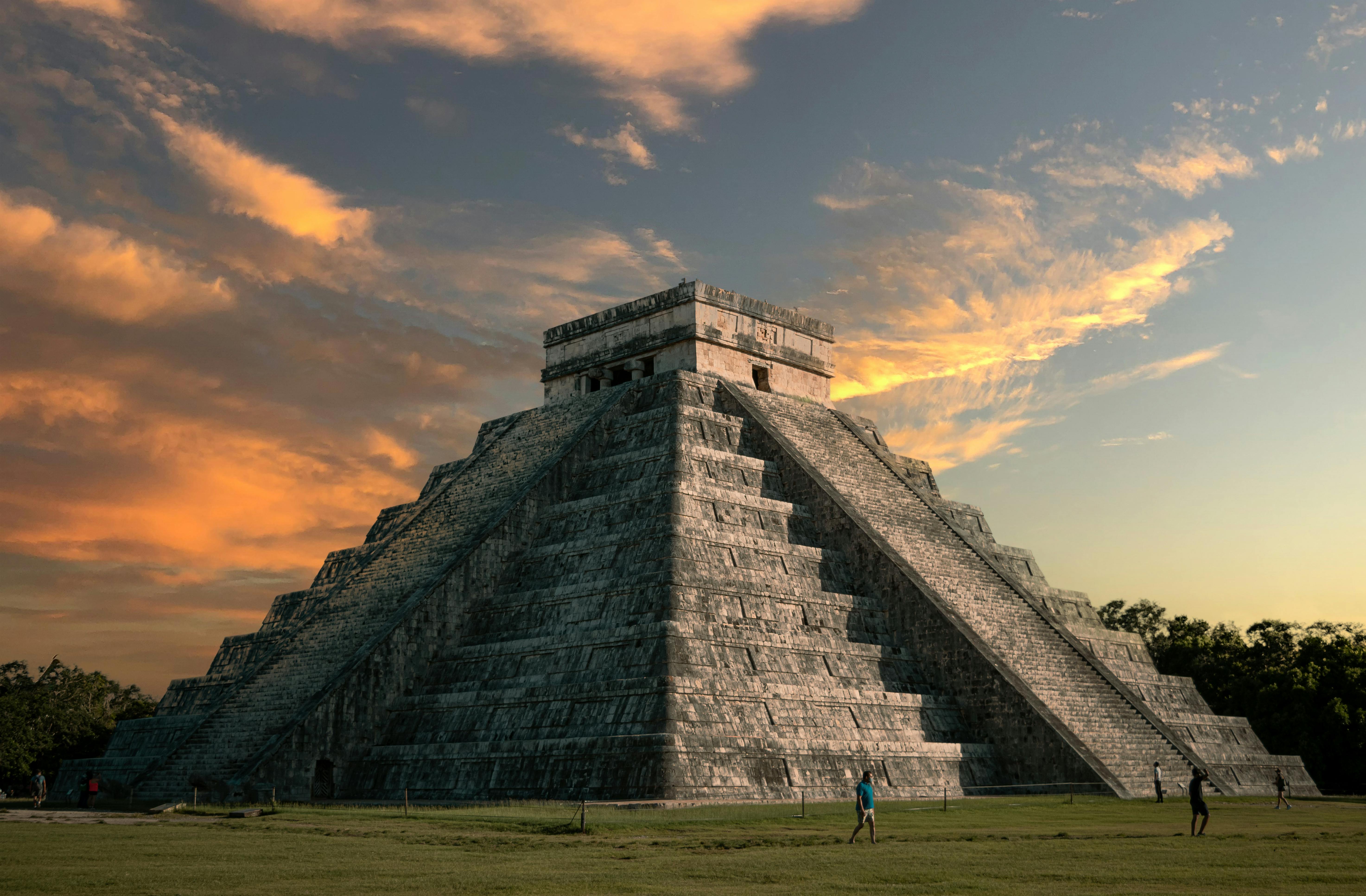
Chichen Itza
Chichen Itza is the crown jewel of archaeological sites in the Yucatan Peninsula and the Caribbean. Before the pandemic, over 2.5 million tourists visited annually. In 2007, it was named one of the New Seven Wonders of the World and has been a UNESCO World Heritage Site since 1998, making it one of the most visited Mayan ruins in Mexico.
From the 10th to 14th centuries, Chichen Itza was a major Mayan power center. Its most famous feature is the Pyramid of Kukulkan, a square pyramid with staircases on all sides. During the spring and autumn equinoxes, a light-and-shadow effect creates the illusion of a serpent slithering down the pyramid.
Other highlights include the Temple of the Warriors, with its feathered serpent columns, and the Temple of a Thousand Columns. There’s also the Platform of Venus, adorned with star carvings, and the Tzompantli, or “wall of skulls,” with Toltec influences.
The ball court at Chichen Itza is the largest in Mesoamerica, and El Caracol, the observatory, features a spiral staircase. Don’t miss the Sacred Cenote, where offerings were made to the Mayan rain god Chaac.
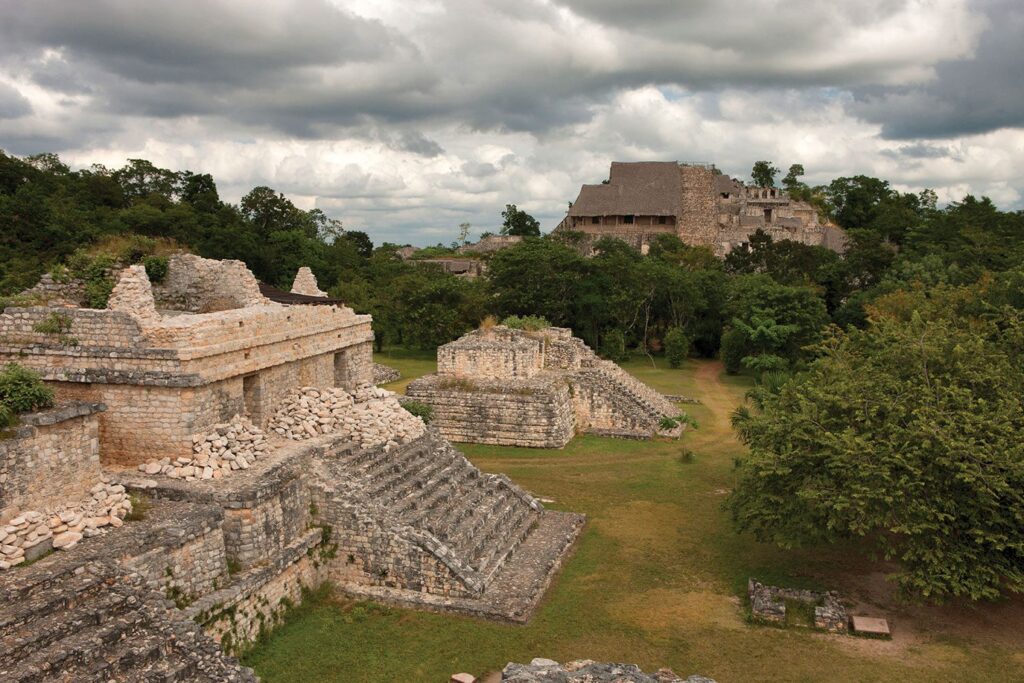
Why Is Ek Balam One of the Most Unique Mayan Ruins in Mexico?
Ek Balam, which translates to either “black jaguar” or possibly “bright star jaguar,” was once a significant city among the Mayan ruins in Mexico. Like many other Mayan cities, its golden era occurred during the Late Classic period (700-1000 AD). The city is encircled by two protective walls, and visitors enter through an impressive Mayan archway.
The centerpiece of Ek Balam is the Acropolis, a colossal structure spanning three levels, measuring approximately 146 meters in length and 55 meters in width. The site also features a ball court and a road leading directly to the heart of the city. This acropolis is one of the unique highlights of the Mayan ruins of Mexico.
In the heart of the city stands the Great Pyramid. Visitors who climb to the top are treated to a stunning view, where they can even glimpse the distant Coba archaeological zone. In ancient times, a “white road,” or sacbe, a raised causeway built by the Maya, connected the two cities, making Ek Balam a significant hub in the Mayan world.
What sets Ek Balam apart from other Mayan ruins in Mexico is its remarkable architectural details. The site is adorned with decorations that haven’t been found elsewhere, such as large winged human figures and hieroglyphic serpents.
Dive deeper into Ek Balam ruins with our article here!
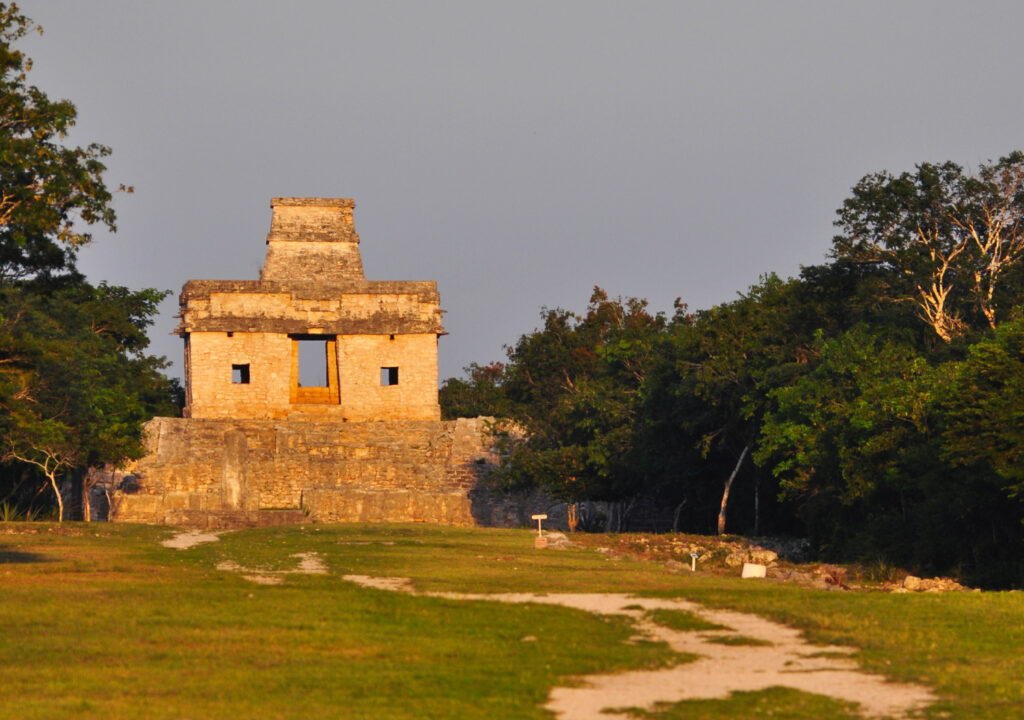
Dzibilchaltun
Dzibilchaltun, which translates to “the place with writing on the stones,” is a Mayan city that’s all about the inscriptions. They’ve found tons of carved stone slabs here, covered in writing and pictures that basically served as ancient Mayan news bulletins.
This city was huge back in the day! In fact, at its peak, it was one of the biggest Mayan cities in the northern Yucatan, with potentially 40,000 people living there! Archaeologists have found around 8,400 structures, all arranged in circles around the ceremonial center. This center alone covers about 25 hectares (that’s like 62 football fields!) and is packed with massive buildings, making it one of the most impressive Mayan ruins in Mexico.
The Temple of the Seven Dolls is the most famous building in the city. It got its name because they found an offering to the gods there with seven little human figurines. It’s also known as the Temple of the Sun because on the equinoxes, the rising sun lines up perfectly with the doorways – pretty cool, right? Shows how astrologically savvy the Maya were.
If you follow one of the roads leading from the ceremonial center, you’ll come across the Xlacah cenote. This is a special kind of cenote, open to the sky, so you can actually swim and snorkel in it! It was used for rituals, and they’ve found all sorts of interesting stuff at the bottom, like pottery, stone tools, and even bones.
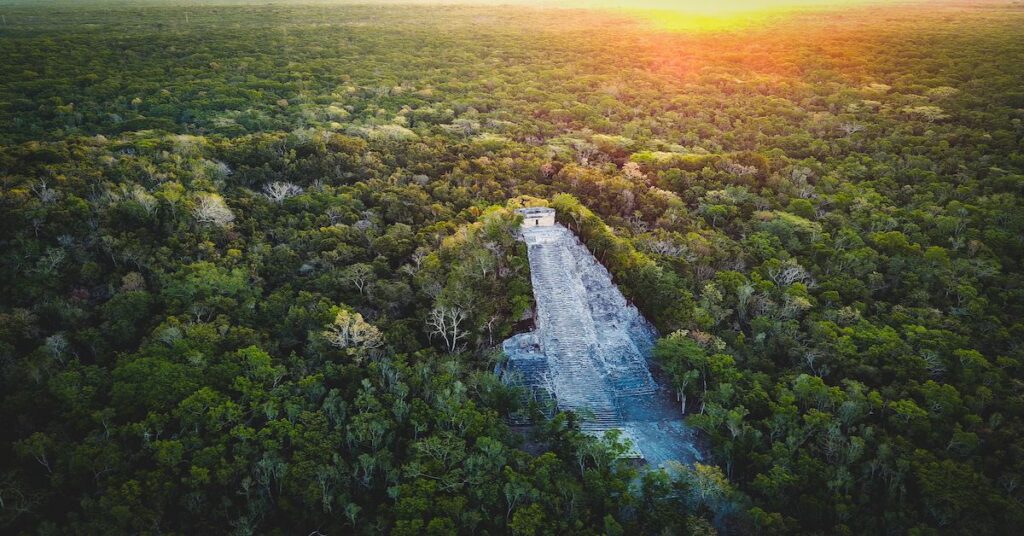
Why Is Coba a Hidden Gem Among the Mayan Ruins in Mexico?
Coba is a hidden gem tucked away in the jungle. It’s not as famous as some of the other Maya sites, but that’s part of its charm. You get the feeling of exploring something truly ancient and untouched. Plus, it’s got the tallest pyramid in the Yucatan Peninsula – Nohoch Mul – which, although you can’t climb it anymore, still offers an impressive sight.
The whole site is spread out, so you’ll probably want to rent a bike or take a rickshaw to get around. As you explore, you’ll come across temples, palaces, and even the raised roadways called sacbeob (pronounced sock-bay-obe) that connected different parts of the city. It’s like wandering through a lost world.
Even though you can’t climb Nohoch Mul anymore, it’s still an awe-inspiring sight. At 42 meters tall, it dominates the jungle landscape and offers a glimpse into the power and ambition of the ancient Maya. Imagine the effort it took to build this massive structure, stone by stone, without modern tools.
And while you can’t reach the summit, you can still appreciate the pyramid’s intricate details and carvings from the ground. It’s a reminder of the ingenuity and skill of the Mayan builders and the enduring legacy they left behind.
Coba is a bit further from the main tourist hubs, so it’s a great option if you’re looking for a more off-the-beaten-path experience. It’s a place where you can connect with nature, history, and the mystery of this ancient civilization.
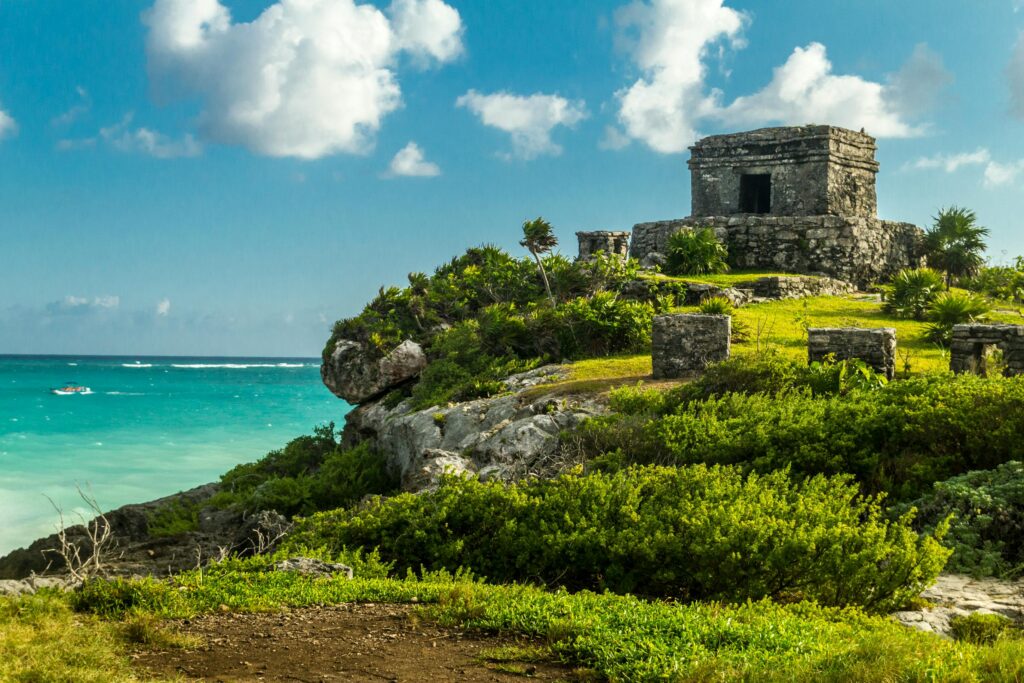
Tulum’s Majestic Clifftop Ruins
Tulum’s famous for its gorgeous beaches, but honestly, the real star of the show is the ancient Mayan ruins perched right on the cliffs, overlooking the Caribbean. The place is called the Tulum Archaeological Zone, and trust us, it’s something you’ve got to see in person.
In Yucatec Mayan, “Tulum” means “wall” or “fence” — which makes sense once you see the giant stone barricade around the ruins. But originally, the city was called Zama, meaning “dawn” or “sunrise,” which is pretty perfect considering it faces the Caribbean Sea, where the sun rises every morning.
Back in its prime, between the 13th and 15th centuries, Tulum was a buzzing port city. You can still spot what’s left of the temples, palaces, and even a lighthouse that helped guide Maya traders as they navigated the coast. Just imagine canoes coming in with goods, merchants making deals, priests holding ceremonies — the place was alive with activity back then.
One of the coolest things about Tulum is the massive wall surrounding the ruins. It’s easy to see why they built it — the location was prime real estate, and they had to protect it. Inside the walls, you’ll find the key buildings, like El Castillo (the castle), the Temple of the Frescoes, and the Temple of the Descending God.
But the fun doesn’t stop at the walls. You can wander around the surrounding jungle, and if you’re lucky, you might spot some iguanas chilling in the sun. And don’t forget to take in the views — that turquoise water against the ruins is unreal. When it comes to Mayan ruins in Mexico, this place is next level. Definitely take your time and soak it all in.
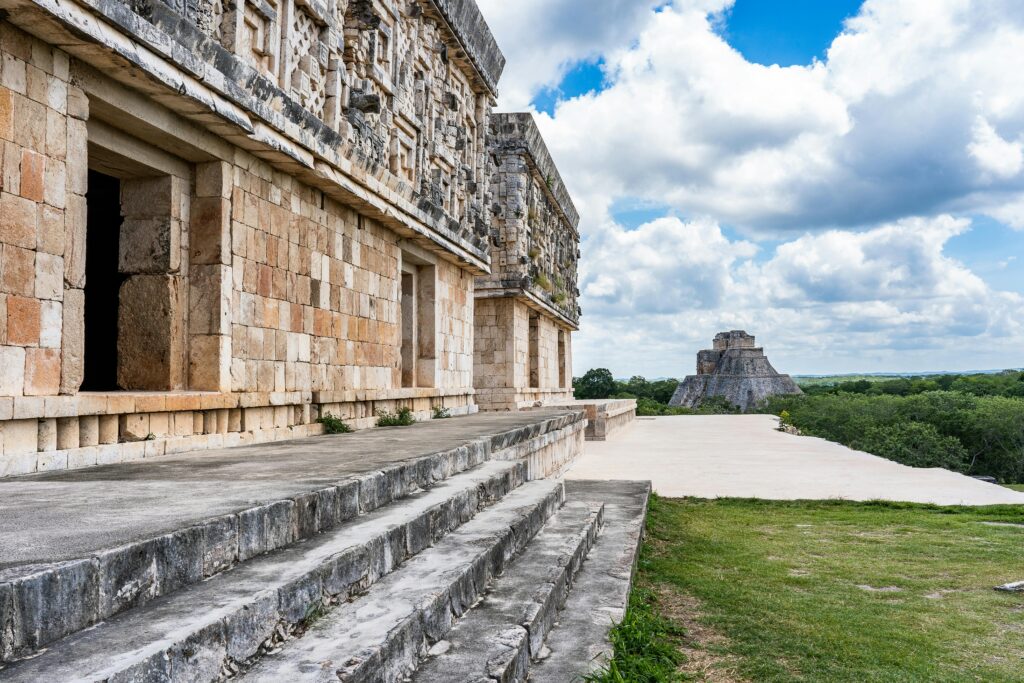
Uxmal
Uxmal, which means “built three times,” had its golden age towards the end of the Late Classic period. It’s a sprawling site with 15 groups of buildings spread out over two kilometers from north to south. The most impressive structure here has to be the Pyramid of the Magician. It’s 35 meters tall and was built in at least five stages over 300 years. The pyramid has an unusual elliptical shape, which is rare in Maya architecture. And get this – the staircase leading to the top is aligned with the setting sun on the summer solstice.
Almost directly opposite the Pyramid of the Magician is the Quadrangle of the Nuns or the Nunnery. It’s a complex of four long buildings arranged around a courtyard, all decorated with intricate stone mosaics and carvings. You’ll see the giant masks of the rain god Chaac, intertwined serpents, and all sorts of geometric patterns.
There’s also the Great Pyramid, which is actually smaller than the Pyramid of the Magician and not as steep. It has nine levels, and at the top sits the Temple of the Parrots, named after the bird carvings there. The facade is super ornate, and inside, there’s this big Chaac mask with a huge nose.
The Governor’s Palace is another must-see. It’s a massive building, 98 meters long, 12 meters wide, and 8.5 meters high. The facade is covered in enormous masks alternating with seated figures. The central figure is the ruler himself, wearing an elaborate headdress and chilling on a throne shaped like a serpent.
Uxmal was declared a UNESCO World Heritage Site in 1996. It has a museum with sculptures and other elements of Puuc architectural style, of which Uxmal is the prime example.
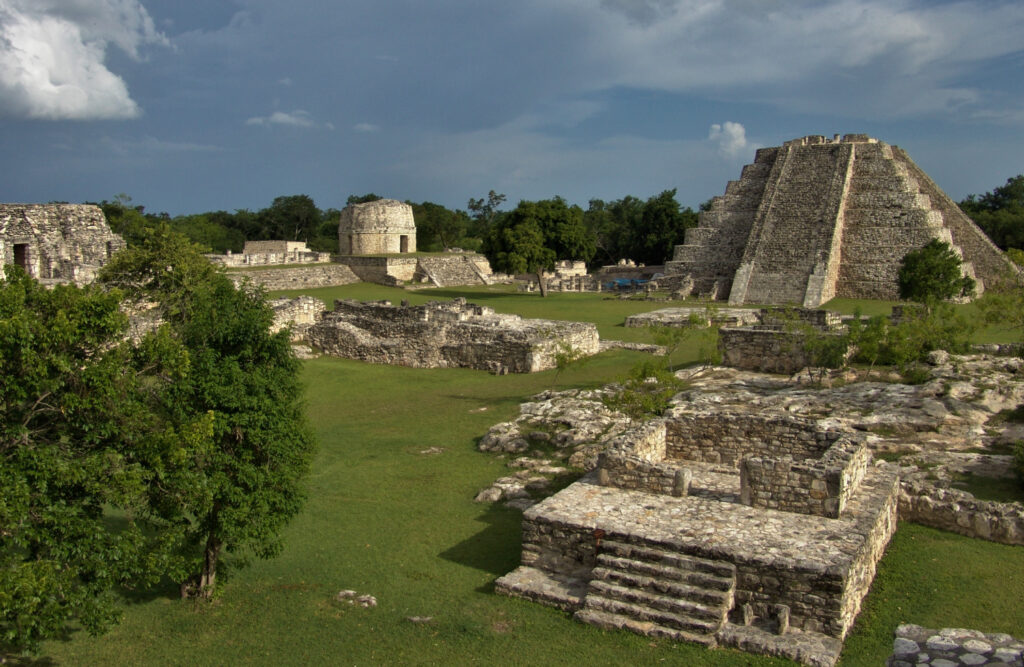
Mayapan
Mayapan, founded in the 13th century AD, is a bit different from other Mayan cities. Its ceremonial center has a cool elliptical shape, but the entire city, enclosed within a massive 9.1 km long wall, is more like a condensed oval with a pointed northeastern corner. It was a densely populated place, with over 4,000 structures crammed inside, mostly homes for the people who lived there.
The most impressive structure in Mayapan is a smaller version of the famous Pyramid of Kukulkan from Chichen Itza. It’s got nine levels, and it’s pretty cool to see how they replicated that iconic design, even though not exactly.
Mayapan has all sorts of buildings for public use, administration, and religious purposes. You’ll find some interesting round structures and groups of columns shaped like serpents, which show the influence of other cultures like the Toltecs. And the best part? Many of the buildings still have their original murals with tons of details and vibrant colors. It’s like stepping back in time! Some of the best murals are in the Hall of Frescoes and the Temple of the Fisherman – definitely worth checking out!
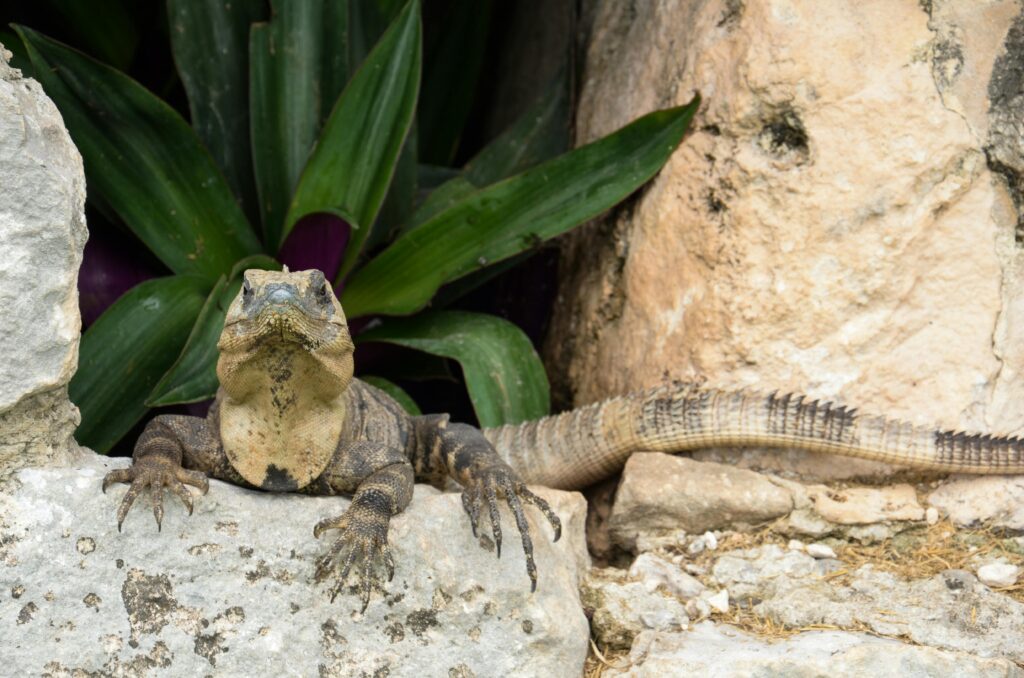
Out of all the ruins, where should you go?
It’s a tough question to answer and depends on what you’re looking for. For instance, if you love history but the beach is still your top priority, Tulum and Coba are best. Of course, you can’t miss Chichen Itza and Ek Balam either.
If you’re like us and enjoy exploring on your own, consider staying overnight in Valladolid to kill two birds with one stone—Ek Balam and Chichen Itza. Make a weekend trip out of it! Depending on how much time you spend at each site, you might even have time to visit a cenote or two—there are plenty around Valladolid.
Now, if you’re staying in Cancun’s hotel zone but don’t feel like traveling far, don’t worry! There are remnants of Mayan culture even in the hotel zone. While they may not be as magnificent as Chichen Itza, Tulum, or Ek Balam, they’re still worth a visit.
As you can see, there’s so much to explore in the Yucatán Peninsula, and it might be difficult (or even impossible) to squeeze all these sights into one vacation.
Dive deeper into the magic of Mexico! Our article “22 Interesting Facts About Mexico” will surprise and delight you with unexpected insights and fascinating trivia.

